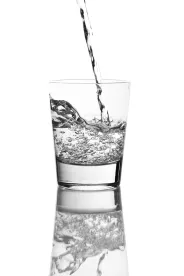The U.S. Environmental Protection Agency (EPA) and the U.S. Army Corps of Engineers (Corps) published a rule on October 23, 2019, repealing the Clean Water Rule promulgated by the Obama administration in 2015. The rule, which goes into effect on December 23, 2019, puts the pre-2015 regulations governing areas subject to federal jurisdiction under the Clean Water Act back into place nationwide. Environmental groups and state attorneys general have vowed to challenge the repeal in court.
Notably, water features in California that may have lost protection as a result of the repeal of the Clean Water Rule are still regulated under state law. California recently finalized its own wetlands definition and permitting procedures in response to Supreme Court decisions narrowing the scope of water resources subject to the Clean Water Act. The rule, known as the Procedures for Discharges of Dredged or Fill Material to Waters of the State (Procedures), include an expanded definition of covered “wetlands” that is similar but not identical to the federal definition in the Clean Water Act. The Procedures go into effect on May 28, 2020.
The Clean Water Rule represented the Obama administration’s attempt to clarify and define the scope of waters subject to regulation under the Clean Water Act following the Rapanos v. U.S. (2006) 547 U.S. 715 decision. However, lawsuits challenging the 2015 rule resulted in several district court decisions enjoining implementation of the Clean Water Rule, including the recent decision in Georgia v. Wheeler (2019) (Case No. 2:15-cv-00079), concluding that it violates the Clean Water Act. As a result, the Clean Water Rule was active in 22 states, including California, but the pre-2015 regulations applied elsewhere.
The immediate practical result of the agencies’ action is to reinstitute the pre-2015 regulations nationwide. Of course, for the states in which the Clean Water Rule had been enjoined, the repeal essentially maintains the status quo. For the 22 states in which the 2015 rule was active, the repeal is likely to result in more case-by-case determinations on coverage under the Clean Water Act.
The agencies continue to work on new regulations to define Clean Water Act jurisdiction based on the Scalia opinion in Rapanos, effectively limiting jurisdiction to traditional navigable waters, their perennial and intermittent tributaries, and wetlands either abutting or with regular surface water connections to other jurisdictional waters.




 />i
/>i

